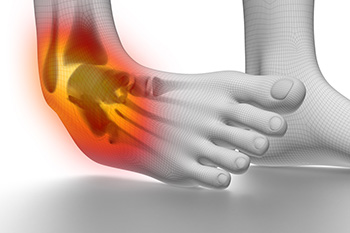Facts About Chronic Ankle Sprains
Tuesday, 21 November 2023 00:00
Ankle sprains occur when the ankle twists or turns, particularly in an inverted position, affecting the lateral ligaments. This strain forces body weight onto the outer edge of the ankle, resulting in stretching and potential tearing of ligaments that help to hold the ankle joint together. Repeated ankle sprains can lead to ankle instability, where the ankle turns inward during physical activity. Individuals who experience chronic ankle sprains may face thickening and irritation of previously sprained ligaments, causing impingement problems and discomfort near the ankle joint's edge. A severe variant, known as a high ankle sprain, damages supportive ligaments above the ankle joint. Recovery from a recurring sprain takes at least twice as long compared to more common sprains. For that reason, prevention is key. This involves performing exercises to strengthen ankle supporting muscles, wearing appropriate footwear for specific activities, and staying mindful of uneven surfaces. Prioritizing ankle health through preventive measures, seeking prompt medical attention, and following a comprehensive rehabilitation plan, can minimize the long-term effects of ankle sprains. Strengthening exercises, wearing proper footwear, and certain ankle braces can help to reduce the risk of ankle sprains. If you have sprained an ankle, it is suggested that you make an immediate appointment with a podiatrist for treatment.
Although ankle sprains are common, they aren’t always minor injuries. If you need your ankle injury looked at, contact John Killough, DPM from Regional Foot Center. Our doctor can provide the care you need to keep you pain-free and on your feet.
How Does an Ankle Sprain Occur?
Ankle sprains are the result of a tear in the ligaments within the ankle. These injuries may happen when you make a rapid shifting movement while your foot is planted. A less common way to sprain your ankle is when your ankle rolls inward while your foot turns outward.
What Are the Symptoms?
- Pain at the sight of the tear
- Bruising/Swelling
- Ankle area is tender to touch
- In severe cases, may hear/feel something tear
- Skin discoloration
Preventing a Sprain
- Wearing appropriate shoes for the occasion
- Stretching before exercises and sports
- Knowing your limits
Treatment of a Sprain
In many cases, the RICE method (Rest, Ice, Compression, and Elevate) is used to treat ankle sprains. However, you should see a podiatrist to see which treatment option would work best with your injury. In severe cases, surgery may be required.
It is important to ask your doctor about rehab options after you receive treatment for your injury. Stretching, strength training, and balance exercises may help the ankle heal while also preventing further injury.
If you have any questions, please feel free to contact our offices located in Charleston and Effingham, IL . We offer the newest diagnostic and treatment technologies for all your foot care needs.






